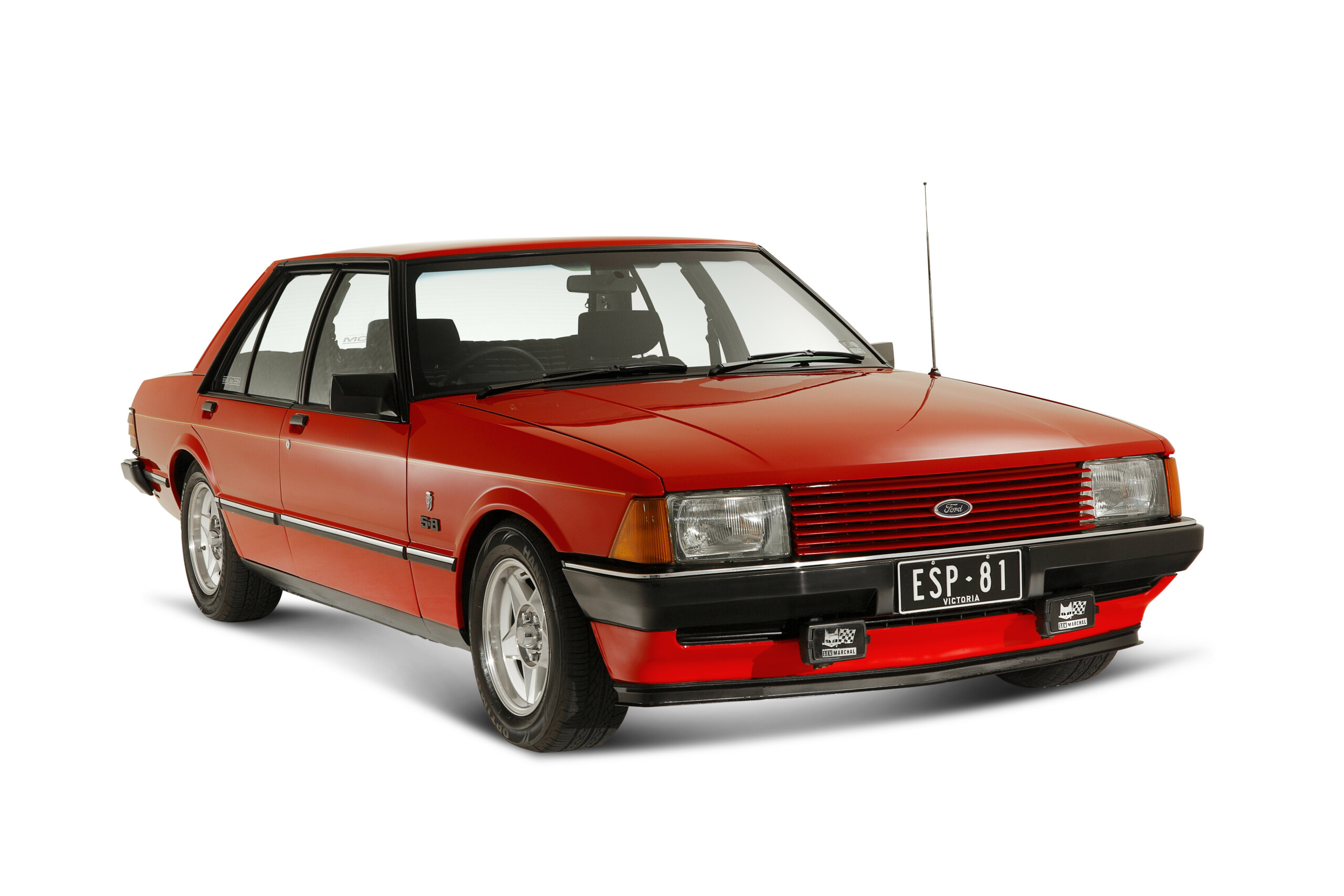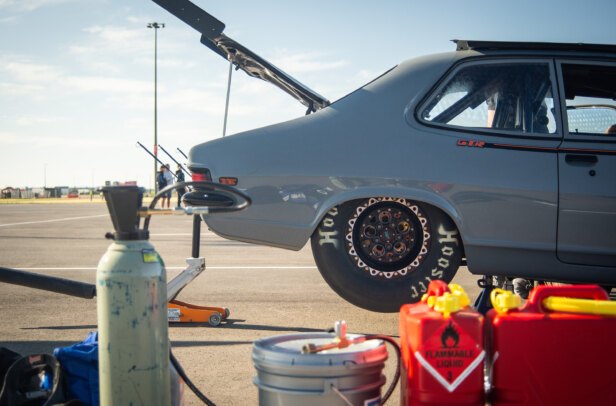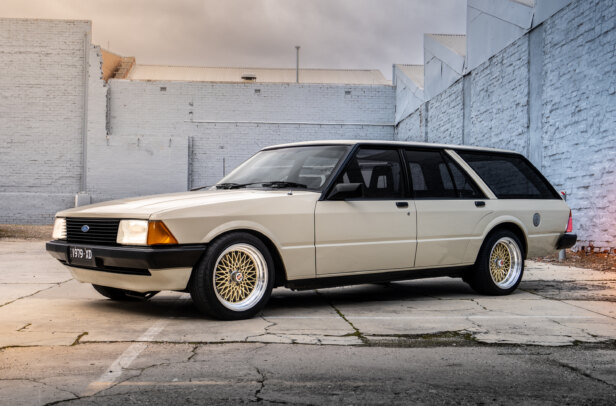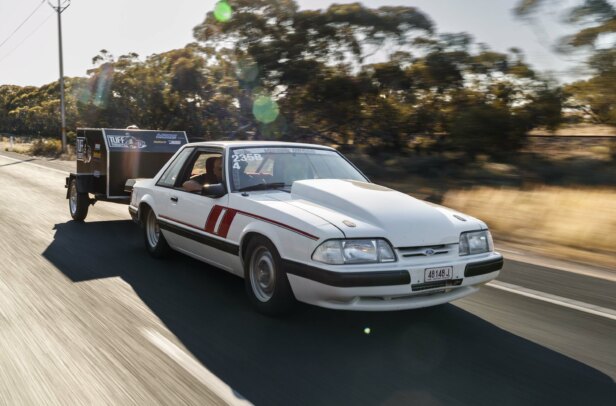After the XC Falcon bloodied Holden’s nose in the sales war, Ford Oz was planning a bigger car to finally wrest the top position from its arch rival. Until it got wind of the Commodore, when the shit hit the fan. Responding to the 70s fuel crisis, Holden went smaller with its Opel-derived sedan, and with a collective “Aw crap!” Ford ditched plans for a monster Cortina and recognised the demand for economy.
First published in the December 2010 issue of Street Machine
Trouble was, there wasn’t anything that Ford could easily adapt, so it was forced into what would end up being a $130million sheet-metal change. It saved some costs by using what was by then 20-year-old running gear, with a floor pan dating back to the XR Falcon.
Ford looked to Europe for styling cues and when the XD hit the market in March 1979, there were clear links to 1977’s Granada. The XA-XC curves had been replaced with a distinctly boxy shape, while the glass area had grown 20 per cent thanks to much thinner pillars and a lower beltline. The square Bosch halogen headlights, blacked-out strip grille with centre-mounted Blue Oval badge and 12-slot wheels were the only styling carry-overs from the XC.
The XD was also smaller — 129mm shorter, 40mm narrower and 10mm lower — but still a big car, and through more efficient use of interior space, able to comfortably seat five adults. So it managed to pull the neat trick of satisfying the demand for economy while keeping that big Aussie car comfort and performance.
It also weighed 116kg less, thanks to extensive use of alloy and plastics, which helped it achieve a 10 per cent improvement in economy from its unchanged range of engines (3.3 and 4.1-litre sixes, 4.9 and 5.8l V8s). And the first plastic fuel tank in an Australian-built car was introduced — Ford had to burn cars in front of legislators to get it approved — along with plastic bumper bars.
Sadly, the V8s were falling out of favour and only offered as options before they were scrapped altogether shortly after the XE was launched. That model featured an EFI option on the 4.1-litre six, an innovation that consolidated Ford’s spot at the top, after the XD hauled past 30 years of almost unbroken Holden sales dominance.
That 4.1 proved to be the powerplant of choice among XD buyers, and the ESP (European Sports Pack), launched in June 1980, featured a Honda-derived alloy head (the 3.3l six got one too), which improved thermal efficiency, allowing increased compression. Along with wool-covered Scheel seats, the ESP included upgraded suspension with higher rated springs, a rear radius rod and Bilstein gas shocks to further improve handling. It was the closest Ford would get to its performance roots — there’d be no GT, GS, GXL or anything symbolising the raw power of the early 70s until the EB, years later.
The final nod to the bent-eight faithful came with the 5.8l as an option in the ESP; an XE Fairmont Ghia ESP that rolled off the line on 25 November, 1982, was the last of the Aussie Cleveland V8s.
Ford had recognised that the collective consciousness had swung to economising the Earth’s precious resources, so it shifted its philosophy from impressing the girls with how many push-ups it could do to how stylish it could look doing them.
Matching the radical exterior, the interior was completely overhauled, with cloth seats featuring Volvo-style see-through headrests, a totally new instrument panel with electronic pulse speedos replacing the cable units, a centre binnacle with a/c controls and face-level ducts, and an overall feeling of light and air in stark contrast to the claustrophobic XC.
The model range had also been brought back to just three — GL (with standard 3.3l Crossflow engine and three-speed manual); Fairmont; and the new Fairmont Ghia (both with the 4.1l six and auto) — reducing the vast scope for customisation that had previously been a strong Ford selling point. That had been a massive investment however, so perhaps Ford just wanted to keep things simple as it bore down on Holden’s market dominance.
Even with the standard engines, the savings in weight made the XD marginally more economical than the Commodore, and with similar price tags (the base model GL was $7258) fleet buyers plumped for the Blue Oval. Holden knew it’d been trumped but it was too damned late to do anything about it, apart from spurious attempts to cook the books with dealer incentives worthy of Pakistani bookmakers.
The only worry Ford had during development was that Holden would pay more attention to the Commodore’s engine, which would have given it the edge. It didn’t, and Ford secured its ascendency by introducing the 4.1l fuel-injected six to replace the V8s soon after the XE was launched in 1982.
That wasn’t the first innovation in the new model. Rear coil springs located by Watts linkage vastly improved handing, and a lot of work went into reducing noise and vibration to make the new XE, with its wrap-over bonnet, the most sophisticated Falcon yet. It also had a boot capable of fitting an Esky — something that had been overlooked in the XD.
Drivers responded in their dealerships and in January 1983, Ford made the announcement that it had officially become the most registered brand in Australia.
Even the carby sixes were better than their predecessors. The 3.3l was now coupled to a five-speed manual — the first Falcon to have one — and with the alloy heads coming in for further attention to improve economy, Ford continued down its new lean and green path.
Dick Johnson was the only bloke who gave those hungry for V8 power any joy, when he won Bathurst in an XD in 1981, and the Australian Touring Car Championship in ’81, ’82 and ’84.
It would be 13 long years between drinks as far as Bathurst glory for the Falcon went but Ford didn’t care because it had finally kicked Holden’s arse on the showroom floor.




Comments